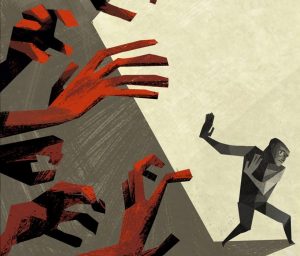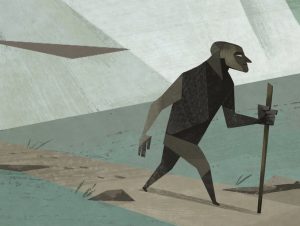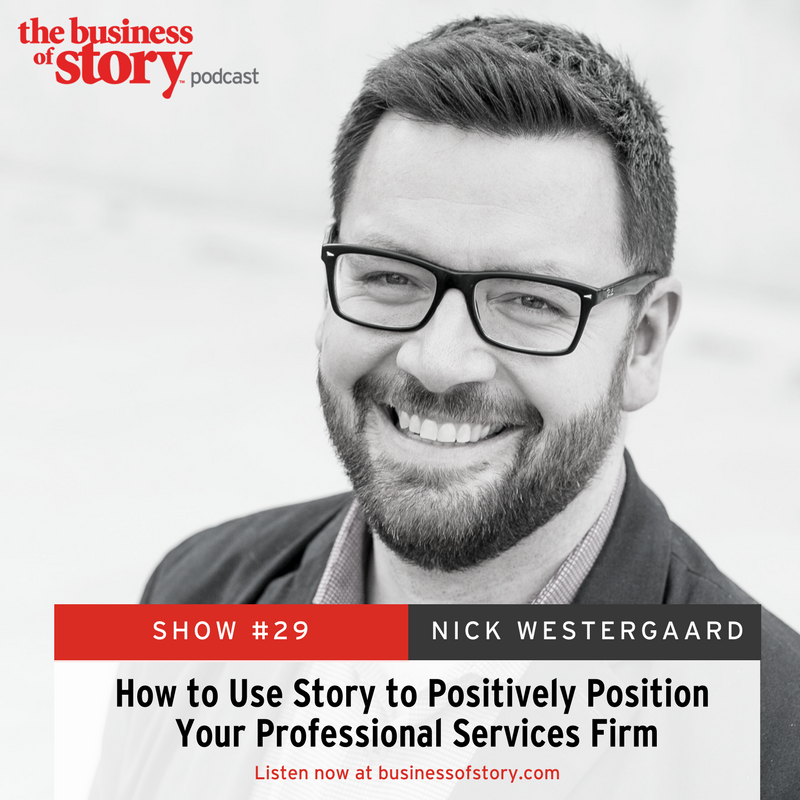Stories are powerful tools that can trigger responses both neurologically and physically in us. They’re mechanisms for communicating meaning which are easily recalled and shared. That’s why stories have been used to pass on lore, morals, and values, dating back to ancient civilizations. They can also help you share your brand’s unique value proposition. But a solid brand story is not always easy to craft and tell.
How can we tell better stories?
Storytelling can be deceptively simple. As kids, we excel at it. Then we grow up. We go to work. Simply put, what the millennials call “adulting” ruins us. Inhibitions take hold and we become risk-adverse.
Storytelling is a right-brained behavior that we struggle with as the grown-up world nudges us further and further to the left logical brain.
What’s the emerging-brand storyteller to do?
First, you have to know what kind of story you’re telling.
As a proud Iowan, it doesn’t take much to get me to share any connection to the Tall-Corn State. One story that many know already is that the academic institution where I teach, the University of Iowa, is home to the legendary Iowa Writer’s Workshop, which has nurtured the talents of authors such as John Irving and Flannery O’Connor.
Another connection to the program is Kurt Vonnegut, who began his classic novel Slaughterhouse-Five while teaching at the Writer’s Workshop (fun fact: Vonnegut’s drawings in books like Breakfast of Champions inspired the drawings featured in my new book Brand Now).
Despite his literary fame, Vonnegut called his rejected master’s thesis his “prettiest contribution to culture.” In it, Vonnegut says that you can plot a story’s arc or shape based on the ups and downs of the main character. He went on to plot various stories using some of the more common shapes such as “Man in a Hole” (Example: The Goonies) and “Boy Meets Girl” (Example: Pretty Woman).
This is not to say that you should write a romantic comedy starring your business. However, Vonnegut’s shapes are prominent examples of story archetypes. Archetypes are recurrent themes, common structures, or patterns that we use to tell stories based on the familiar.
If the brain is hardwired for story, we can take advantage of some of the more common story shapes or archetypes to position who we are and what we stand for.
Christopher Booker makes most of us authors look like hacks. That’s because he spent 34 years writing his book The Seven Basic Plots: Why We Tell Stories. Like Vonnegut, Booker felt that there were essential archetypes driving almost every story told.
Here’s an overview of five of his seven archetypes that you can apply to your brand. In doing so, you can see which one best compliments your brand’s unique value proposition.
1. Overcoming the Monster
 The protagonist sets out to defeat an antagonistic force (often evil), which threatens the protagonist and/or protagonist’s homeland.
The protagonist sets out to defeat an antagonistic force (often evil), which threatens the protagonist and/or protagonist’s homeland.
- Popular examples: Star Wars: A New Hope, the Harry Potter books and movies, and the James Bond franchise.
- Brand examples: Brands who adapt this story archetype are rebels. From its 1984 ad to the more literal Mac vs. PC, Apple has always fought the monster. Dollar Shave Club boldly takes on the monstrous process of “going to the store and overpaying for shave tech.”
- How to use: This story is dependent on having an antagonist. Who or what are you fighting against?
2. Rags to Riches
The poor protagonist acquires things such as power, wealth, and a mate, before losing it all and gaining it back upon growing as a person.
- Popular examples: Cinderella, Rocky, and Aladdin.
- Brand examples: These brands are often at the center of underdog stories, like Avis, who famously embraced their second-place status in the rental car industry by saying that they tried harder as a result. Scrappy founders like Paul Mitchell’s John Paul DeJoria and Wendy’s Dave Thomas also have rags to riches at the heart of their brand stories.
- How to use: The dynamic of “before and after” along with overall growth is key for this type of story. Where did you come from?
3. The Quest
The protagonist and some companions set out to acquire an important object or to get to a location, facing many obstacles and temptations along the way.
 Popular examples: Lord of the Rings, Indiana Jones, and Harold & Kumar Go to White Castle.
Popular examples: Lord of the Rings, Indiana Jones, and Harold & Kumar Go to White Castle. - Brand examples: Epic brands in search of something bigger are on a quest of their own. Salesforce wants to liberate users from software and connect them to their data and customers. Axe body spray wants to connect customers with others in a more . . . literal sense.
- How to use: An ideal that you are striving toward is key to implementing this archetype. What do you believe in? What are you and you alone on a quest to achieve?
4. Voyage and Return
The protagonist goes to a strange land and, after overcoming the threats it poses to him or her, returns with experience.
- Popular examples: The Wizard of Oz, Apollo 13, and Finding Nemo.
- Brand examples: This plot is dependent on learning something—a better way—as a result of a journey. Starbucks’s Howard Schultz learned from backpacking across Europe that coffee shops in America could be more than just diners and donut shops. MagicLeap promises a better classroom experience based on their leading-edge work in augmented reality (AR).
- How to use: What unique experience informs your enlightened perspective? Where have you been, and what has it taught you?
5. Rebirth
During the course of the story, an important event forces the main characters to change their ways, often making them better people.
- Popular examples: A Christmas Carol, How the Grinch Stole Christmas, and the Doctor Who series (the Doctor regenerates as a new actor every few seasons).
- Brand examples: Similar to brands embracing the Voyage and Return plot, this story represents a transformation. Extreme examples include brands like Vidal Sassoon and Vanity Fair magazine, both of which ceased operations for years to retool before returning—reinvigorated—to the market. It can also just be striving to do something better. One-to-one brands like Tom’s and Warby Parker wanted to do more than just sell shoes and glasses.
- How to use: Has your brand been born again? Have you undergone a reboot? How does this inform your brand’s story?
The two not covered here focus more on the traditional storytelling genres of comedy and tragedy, which can certainly be applied with greater analysis. This is a start.
Do you have a clear enemy—a competitor or rival process—that you’re rebelling against? You may be overcoming a monster of your own.
Are you on a quest? Striving toward an ideal or trying to achieve something for your customer? Start writing your epic tale through Middle Earth.
You get the idea. Based on these common plots to common stories, you know what happens next. By finding elements of story and plot that work for your brand, you can embrace other archetypal tools such as conflict, character, and voice.
Chickasaw storyteller Mary Frances Thompson, best known as Te Ata, once said: “Stories are like this old ragweed. They all come from the same root, but they spread out, this way, that way.” To help your brand spread, you have to understand the story behind your unique value proposition.
Listen to Nick Westergaard on episode #29: How to Use Story to Positively Position Your Professional Services Firm









